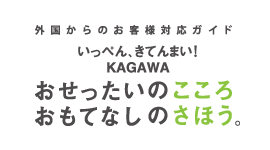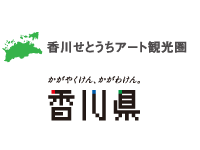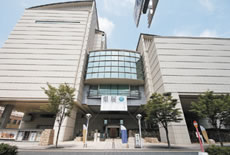
With the Seto Inland Sea to the north and Yashima Plateau to the east, this comprehensive museum stands in a beautiful historical/cultural area. With its combined functions as a historical museum and an art museum, the Kagawa Museum serves as an important place for a broad range of activities, including exhibits, diffusion of knowledge, research, and study.
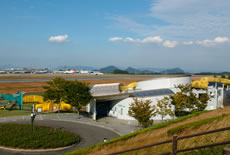
This children's learning/playing center strives to encourage interest in creativity and science among children through a wide range of experiential activities. Children can spend the whole day playing here, as they enjoy the Space Theater, cycling sports facilities, the jungle gym, and our four workshops (art, science, music, and computers).
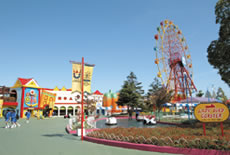
This theme park features theater performances, parades, many fun amusement park rides, delicious foods, shopping, hot springs, hotel facilities, and all kinds of different entertainment.
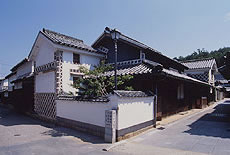
Once, the boatmen who lived on this island off of Marugame and worked in the shipping industry tended to make a grand show of their wealth with their elaborately built mansions, and to this day there remain many beautiful Edo and Meiji Era buildings complete with decorative roof tiles, stucco walls, old earthen rampart walls, and lattice-covered bay windows. Kasajima’s winding streets, with their limited lines of sight designed to deter invaders, remain as a testament to this place’s historical role as a castle town. Other signs of unique town design, including the town houses facing directly onto the street and temples and shrines situated right on the outskirts of the village, can be seen everywhere, and visitors can truly experience the remarkable craft of the designers and carpenters of the Shiwaku Islands.

Marugame Castle boasts Japan’s tallest stone castle wall and a remarkable 400 year history. The castle keep, as seen from the front gate, is full of imposing dignity, yet with the setting of the evening sun, it takes on a gentle beauty that can put the heart at ease. For its full 400 years of existence, the castle's lustre has never faded, and it has always blended seamlessly with the surrounding nature. The height and beauty of its stone wall has earned Marugame Castle a place among “Japan’s 100 Greatest Castles.” It is also well-loved as a calm resting place where local citizens can enjoy walks and springtime cherry blossom viewing.
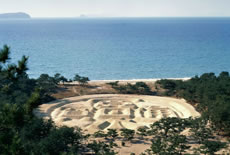
Sculpted in the white sands of Ariake Beach is a giant sand coin (122 meters east to west, 90 meters north to south, and 345 meters in circumference), which appears to be perfectly circular when viewed from the top of Kotohiki Mountain. The coin is also called “Kaneitsuho” for the four Japanese characters engraved on it, and the sculpture is said to have been created all in one night as a form of tribute to the feudal lord, Takatoshi Ikoma. Many people visit this area because it is said that if you gaze upon the sand coin, you will have a long, healthy life with no financial worries.
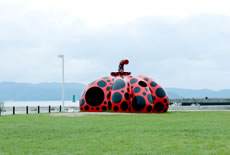
Many different kinds of art activities have developed on the island of Naoshima. At the Benesse House, an art museum that also serves as a high-class hotel, you can enjoy artwork not only inside the building's galleries but also in the outdoor display spaces on the beach and in the forest lane that connects the Museum Wing and the Park Wing. The Chichu Art Museum features serene spaces where you can contemplate the relationships between mankind and nature with artwork by Claude Monet, Walter De Maria, and James Turrell. Also, just outside of this museum, you can enjoy the Chichu Garden, which features the beauty of nature as painted in Monet's works. You can feel art echoing the rhythm of nature and history at the Honmura Lounge and Archive, as well as the Art House Project, in which artists have taken old folk houses and remodeled them, turning them into works of art. In 2010, Lee Ufan, an artist from South Korea who is working in Europe and gaining rave reviews internationally, worked together with renowned archtiect Tadao Ando to open the Lee Ufan Museum.
※Yayoi Kusama “Red Pumpkin” (2006), Naoshima: Miyanoura Port Area, Photograph: Daisuke Aochi
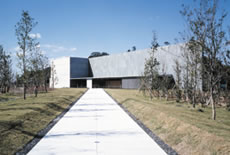
This museum features more than 280 works of the Japanese painter, Kaii Higashiyama, all of which have been donated by his family. Higashiyama’s grandfather was born in Sakaide’s Hitsuishijima, thus providing a strong connection between the painter and Kagawa Prefecture. From the museum, you can see the Seto Ohashi Bridge’s light gray color (the shade of which was suggested by Higashiyama himself) as it unfolds across the sea, and you can relax in this soothing place, surrounded by the beauty of the nature of the Seto Inland Sea. In addition to introducing Kaii Higashiyama and his connections to this prefecture, we also feature art under many diverse themes and, compliments of the cooperation of many other art museums, we introduce the works of a variety of artists, who have connections with Higashiyama and his work.

This museum was built in November of 2011 in front of JR Marugame Station. On a rotating basis it exhibits over 20,000 of the works donated by the world-renowned Genichiro Inokuma, a painter who has deep ties with the city of Marugame. Special exhibitions are also held four times a year. The building was designed by Yoshio Taniguchi, who is famous for his redesign of the New York Museum of Modern Art.
